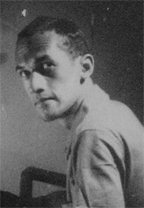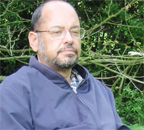Al Creighton’s (Arts on Sunday)
Guyana’s President Bharrat Jagdeo held a conference last week with a wide range of officials and practitioners in the country’s tourism sector, tourism industry and in some areas of culture at the Convention Centre in Lilliendaal. The meeting was also attended by Minister of Culture Frank Anthony to advise the President on the kinds of festivals and other events that could be held in Guyana.

In this initiative, the President must have been conscious of the state of the nation’s overtures in tourism. There have been concerted attempts to take off in this industry; these were accelerated in the late 1990s but have still not yet managed to leave the ground. He wanted ideas which would no doubt help to provide some of the life needed for the sector to take flight, and he must have been aware of the role of activities in the broad fields of culture in the creation of possibilities to achieve relevant objectives.
Ironically, the President arrived at the conference venue just as the participants in another conference were leaving, starting his initiative at the precise moment that the last item in that other event ended. This was a film on the state of the Caribbean cultural industry of film and video, a crucial issue in the contemporary tourism of the region. It was a symbolic way of dramatising the link between the two, because the conference that was held earlier was the XXVIII Annual West Indian Literature Conference hosted by the University of Guyana and attended by academics from the Caribbean, the USA and the UK.
But what does a meeting on literature have to do with the generation of ideas to boost events in the tourism sector of Guyana? The answer is, much more than immediately meets the eye, and the directions in which West Indian literature has been moving, perhaps, the last twenty years, have brought it much closer to studies of the kinds of factors that operate within a tourist industry. Perhaps the President and Minister Anthony should have arrived three hours earlier to join the panels in the literature conference; they would certainly have gone away with some of the ideas and suggestions they were seeking, because the topics covered there were surprisingly relevant to the various cultural activities and social conditions in the region and their relationships with the rest of the world.

The landscapes of Guyana, Jamaica and the Caribbean; art; the relationships between Caribbean fiction-writing and a Beethoven symphony, and between fiction and autobiography; ‘creolised’ concepts of beauty and fashion in the region; the dancehall, reggae, soca, carnival and images of the region; film and the place of cultural industries; Caribbean performance traditions; theatre, the problems of its assessment and related cultural and social politics; as well as treatments of gender and notions of masculinity were prominent among the issues ventilated in the conference on West Indian literature held in Guyana last week.
When one considers that some of the major papers presented and discussed related directly to products and industries that generate tourism and related material, one sees more and more the relevance of literature and contemporary literary studies in the Caribbean to the material wealth and well-being of the countries. The papers discussed in the conference at the same time demonstrated the amazing range and reach of what is now regarded as “literature” and “literary studies” and the several cultural phenomena now drawn into literary analysis.
The conference theme was ‘The Quiet Revolutions in West Indian Literature and Criticism’ and this also included special events on the work of Edgar Mittelholzer and Wilson Harris, two of the “quiet revolutionaries” in the literature. Landscape and art were found to be closely related to their writing.
Prof Mark McWatt made a presentation at the official opening of the conference on the work of Harris, focusing the writer’s preoccupation with the Guyanese landscape, ‘Landscape and the Language of the Imagination in the Fiction of Wilson Harris.’ McWatt used photographs by Bobby Fernandes to illustrate his study of this very important element in Harris’s work, which includes his relationship with the interior, the dense rainforests, rivers and waterfalls and the roles these played in his themes, the life of his characters and the psyche of both humans and the land. As it happens, this landscape is also important to the poetry and prose of McWatt himself, who is also a poet and fiction writer. He read samples of his work at the conference, as did another poet and novelist, Velma Pollard of Jamaica.
Art and the landscape were also focused by Prof Evelyn O’Callaghan of UWI Cave Hill, who was one of two professors specially honoured by the conference for their outstanding work and consistent contributions to the series of conferences. O’Callaghan made a presentation which comprised the segment ‘Quiet Revolutions I,’ engaging a study of ‘Marketing Caribbean Landscapes: the Case of William Beckford of Somerley and George Robertson.’ This was a discussion of the place, relevance and symbolism of the landscape in plantation life with their various political resonances in contemporary Jamaica and Barbados. It was also a study of art, including landscape paintings and what they can tell about plantation and present societies.
It is to be noted that O’Callaghan called it ‘Marketing Caribbean Landscapes …’ which ties it directly to cultural industries and art as a tourism product. This ties in with the marketability of the landscape in the case of Guyana.
It also relates closely to the work presented by the other professor honoured by the conference for her outstanding work as an academic and contributions to the conferences. For the segment ‘Quiet Revolutions II,’ Prof Carolyn Cooper of UWI, Mona, made a presentation on ‘Caribbean Fashion Week: Creolising Beauty in the African Diaspora.’ Here she interrogated the conventional and ‘traditional’ notions of beauty inherited from Europe, as against the new more relevant concepts and the way local Caribbean thinking and styles have taken command and have shaped the fashion industry in the region. She used the now internationally famous Caribbean Fashion Week as one of her points of reference, showing the confident place of regional fashion and its models in the international market. This she related to a close analysis of local culture.
This growing cultural industry seems to have now found itself in the Caribbean and is slowly doing the same for Guyana. It is to be noted, as well, the way this discourse fits in without question or surprise in literary analysis.
Another major presentation was the feature paper in the event ‘Edgar Mittelholzer: A Quiet Revolutionary.’ This was presented by Juanita Cox of the University of Birmingham and London Metropolitan University, whose work was ‘Corentyne Thunder: A Quiet Revolution.’ It sought to “explore the revolutionary objectives” Mittelholzer set out to achieve in the writing of that novel.
This is where the influence of Beethoven’s Pastoral Symphony on the novel was discussed, since the work was influenced by and actually patterned itself on that musical composition. Cox, who is the newest and one of the most prominent scholars on Mittelholzer’s work, also showed the novelist’s intertextual engagement of other works such as Moliere’s L’Avare, the work of Conrad and Shakespeare’s Hamlet.
Mittelholzer was one of the most revolutionary of Guyanese and Caribbean writers in many ways, including his insistence that he must live as professional writer. He made writing into an industry in New Amsterdam at a time when this was unheard of in the region.
Mittelholzer can be a force in the marketing of Guyana today.





